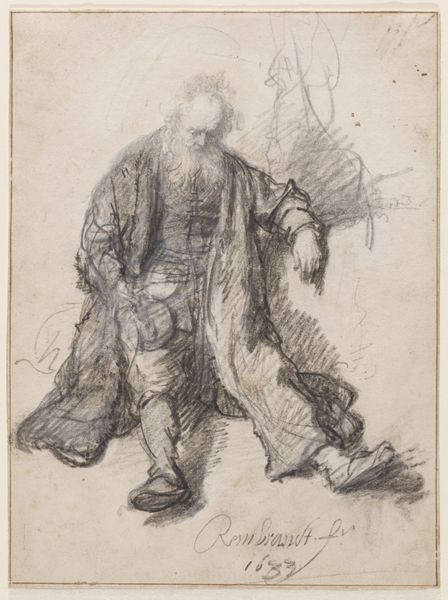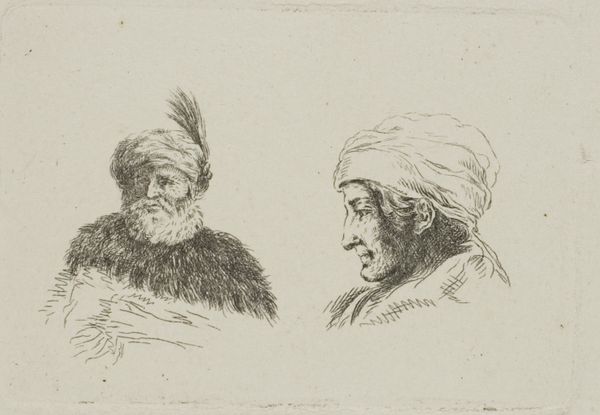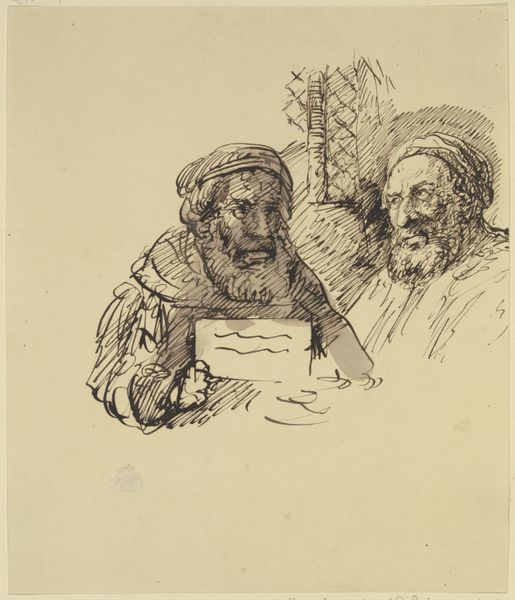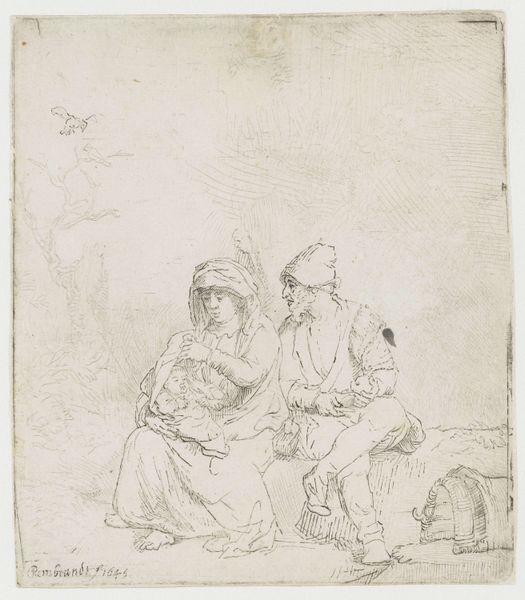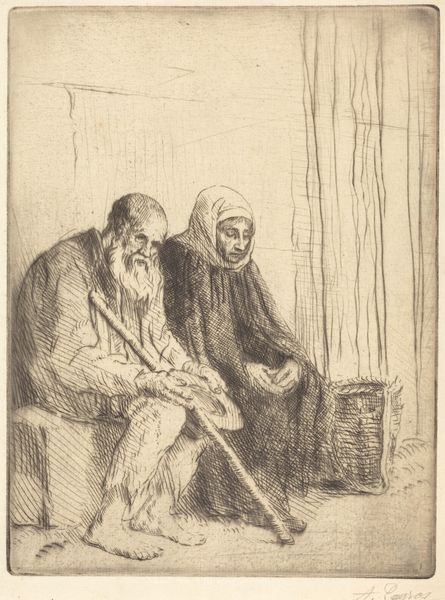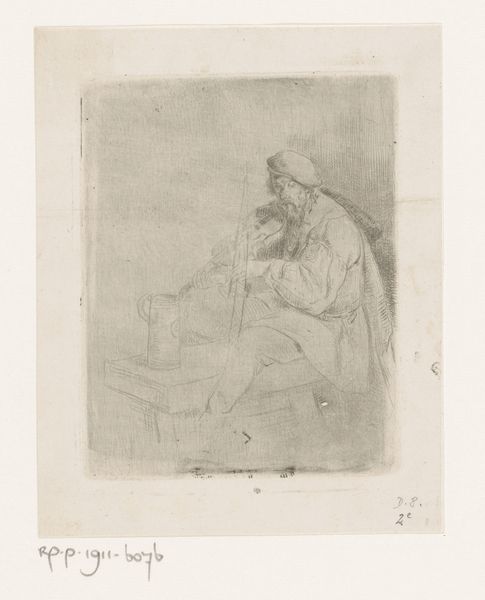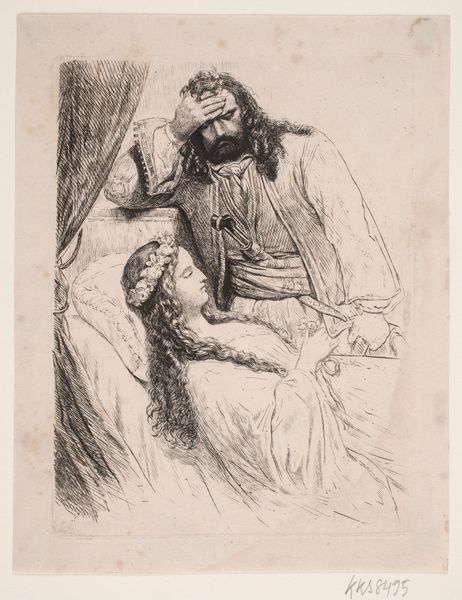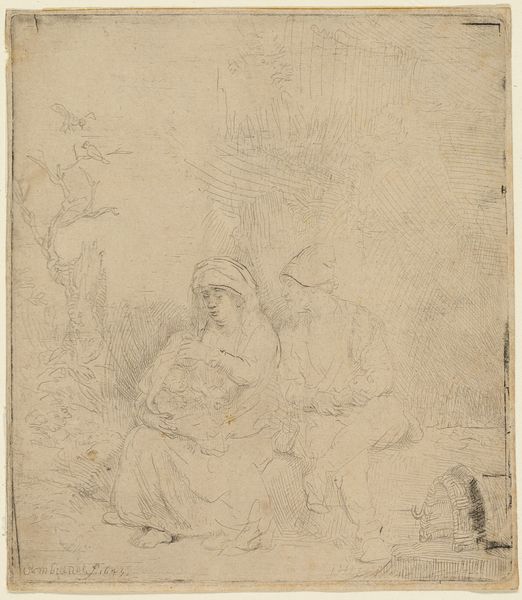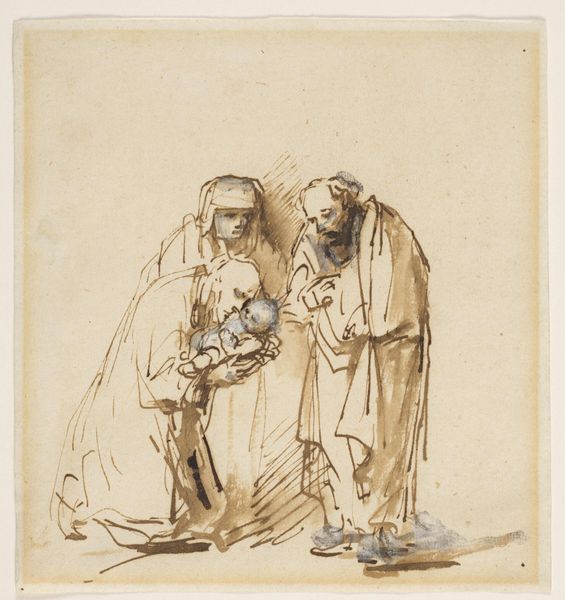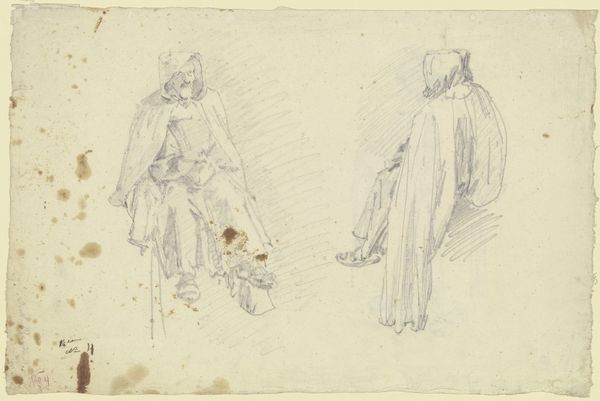
Copyright: Public Domain
This drawing, Two Saltimbanques, was made by Honoré Daumier, using pen, ink, and wash on paper. Daumier was a master of lithography, a printing process, but here we see him using a different set of skills. With quick strokes, he captures the weary posture of these traveling performers. Look closely, and you can almost feel the rough texture of the paper, the way the ink bleeds into it, creating shadows and depth. It’s not just a picture, but a record of his hand at work. The drawing feels immediate and unpretentious. The saltimbanques themselves are members of the working class, earning their keep. The way that Daumier has represented them is important. He doesn’t try to pretty them up. They are shown to us as they are, figures from the margins of society, captured with a straightforward, honest touch. Ultimately, this work reminds us that art is not just about the subject, but about how it’s made, and what that making tells us about the world.
Comments
stadelmuseum about 2 years ago
⋮
The illustrator Honoré Daumier became famous primarily for his important socio-historical lithographs in the field of newspaper caricatures. With a keen talent for observation, he commented in thousands of instances the rapid succession of political events in France, the work of its lawyers and, above all, the joys, shocks and fears of its citizens. The incisiveness of his satirical ideas was just as decisive for his success as his remarkable drawing skills.In addition to his prints, painting and sculpture, Daumier's 'Saltimbanques' show to powerful effect the particular importance of drawing for the artist as a private and reflective medium. Daumier depicts the melancholy scene of two ageing travelling artists with sensitivity and an economy of means. They seem to have found their place away from the public eye. With sketch-like lightness, the illustrator portrays the two obviously contrasting characters and their relationship to each other in pen and ink. The portly street entertainer has sat down, legs dangling, and has turned towards his partner, who is only leaning back. The worn-out-looking cap on his bald head makes his slim chum look like a jester. With his hands clasped in front of his body, he is staring resignedly in front of him. His eyes, sunk in deep hollows, emphasise his introspective reverie, which seeks no external stimuli. With subtle sensitivity, Daumier lends this silent dialogue an expression of calmness through the light interplay of lines and gently washed shading. As exact opposites, this duo of travelling entertainers may have reminded Daumier of Don Quixote and Sancho Panza, whom he studied on a number of occasions. Daumier repeatedly focused on the world of the travelling artists. While he liked to present the spectacle of the fair by using the example of the parade as a way of drumming up business, he shows the travelling artists to be rather quiet and lonely figures. In nineteenth-century art and literature their independence and existence as outsiders made them into symbols of an artist's life - a concept taken up in the twentieth century by artists like Pablo Picasso and Max Beckmann. Daumier can certainly be credited with having developed this metaphor into a subject worth depicting. In this drawing he approached it with the calmness of age that comes with knowledge and experience.
Join the conversation
Join millions of artists and users on Artera today and experience the ultimate creative platform.
